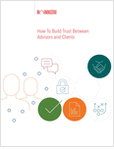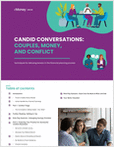Zvi Bodie has long been a lone wolf in the financial services industry. The Boston University finance professor and veteran risk avoidance advocate, has himself risked being pelted with eggs, or worse, at industry gatherings more disposed to hearing his Wharton nemesis Jeremy Siegel’s message about stocks for the long run.
 Now the author of the classic college text on investments has written a new book, out this week, targeted to the general public, and appropriately titled Risk Less and Prosper. In a year in which the U.S. stock market has trounced its world peers with a nearly 0% return, on top of a dismal decade of stock performance, investors’ heightened sense of risk may make them receptive to a message that was tuned out in previous bull markets. In an interview with AdvisorOne, Bodie discussed some of the ideas in his book, co-written with financial advisor Rachelle Taqqu.
Now the author of the classic college text on investments has written a new book, out this week, targeted to the general public, and appropriately titled Risk Less and Prosper. In a year in which the U.S. stock market has trounced its world peers with a nearly 0% return, on top of a dismal decade of stock performance, investors’ heightened sense of risk may make them receptive to a message that was tuned out in previous bull markets. In an interview with AdvisorOne, Bodie discussed some of the ideas in his book, co-written with financial advisor Rachelle Taqqu.
How did U.S. investors come to be so risk-prone?
Because of the positive stock market experience of the ’80s and ’90s. People don’t have memories that go back that far, so they thought you can’t lose if you hold on.
But you shouldn’t think you’re going to earn a potential risk premium without taking risk. It was always a crazy idea to think that you could, but that idea was drilled into people’s heads by a whole industry campaign.
The vast majority of investment advisors are telling people: “History proves that in the long run you’re going to do best by staying in stocks. And the worst thing you can do is lose your nerve when the stock market goes down; on the contrary you should be doubling up.”
That conventional wisdom is very comforting to people who have lost money. But everyone has a finite horizon. You can only postpone using the money so long.
If you don’t need the money, you’re investing for future generations or some charity; those are the people who should be taking risks. Ironically, the people who are high-net-worth they’re the ones who make sure they have ironclad guarantees on their standard of living. [Not because they are smarter but because] people don’t like to see their living standard go down.
What is the message of your new book?
In my previous book, Worry-Free Investing, I started out by talking about inflation-protected bonds. In this book, I want them to understand that investing is all about you and your goal. I think we’re going to see a popularization of GDI investing [goal-driven investing].
LDI [liability-driven investing] is popular among institutional investors. LDI is matching your assets to your liabilities. In the individual investor world, the one advisors are concerned about, you don’t have liabilities, you have goals. Those are going to determine what you consider a risky or non-risky strategy. If you can save enough to cover your basic needs and lock them in, I believe that’s what people really want. And that’s a form of asset-liability matching.
Investment advisors don’t talk about asset-liability matching; they talk about diversification. But diversification comes in second. The first thing you want to do is cover your assets. In the book, we call it matchmaking.
Since investing is all about trading off risks and rewards, the natural starting point –the benchmark–is to say, “What if I want to take as little risk as possible?” That is where you should start the process. “Now that I know what it will take in terms of what I have to save, what’s the earliest date I have to retire?”
That involves matching. You might be 100% TIPS in that situation. “So what if I put 20% of my money into stocks? On the upside, that means I can save less or consume more; or I can retire earlier.”








 December 29, 2011 at 09:17 AM
December 29, 2011 at 09:17 AM









